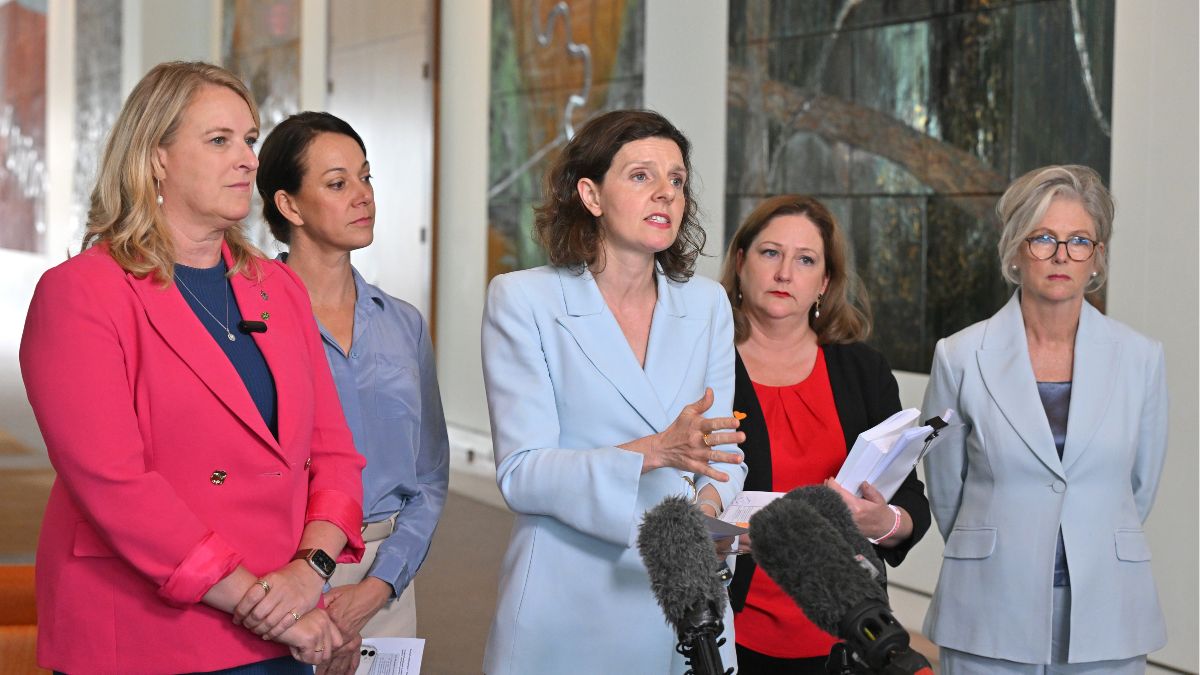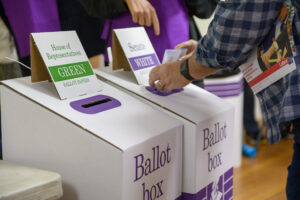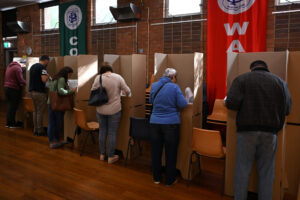Who votes with whom? Beware claims that use voting records to argue politicians have similar views

Sky News says community independent MP Allegra Spender supports more Coalition motions than Greens motions.
But They Vote for You says Spender votes with Greens MPs more often than Coalition MPs.
That both those claims are made about the same person is proof that voting comparisons are fraught.
It is just as confusing when it comes to the major parties.
We know that most legislation is non-controversial and bipartisan, so how is it possible that Labor Prime Minister Anthony Albanese only votes with Opposition Leader Peter Dutton 1% of the time?
And earlier this year the Liberal and Labor parties did a deal this year to change Australia’s election laws – so why are most Liberal senators not recorded as voting for the deal? And why on that bill are community independents recorded as voting against 61 Labor MPs but only against four Coalition MPs?
The full story is more complicated
Nick Evershed at The Guardian today has a very good article asking what the data shows about politicians’ voting records. For example, does the voting record of the community independents lean towards the Greens, towards Labor or towards the Coalition? And how often do the major parties vote together?
The real story is that the answer depends on what question you are asking – and Evershed has made the data available so you can play around with it yourself.
Voting comparisons are a poor measure of political position
The broad problem with vote comparisons is that they don’t track what does matter, and do track what doesn’t matter.
- Most votes aren’t recorded. The majority of legislation passes “on the voices”, meaning no votes are recorded.
- Many party MPs skip votes – their colleagues represent the party position. Even when votes are recorded, only a few MPs may show up to represent their party’s position.
- If there are only a few crossbenchers on one side, the division isn’t fully recorded.
- MPs may vote the same way but for different reasons. How do you capture when two MPs vote the same way, but for different reasons? Are they really “voting together”? What if someone votes against legislation because it’s been rushed and poorly drafted, not because they disagree with the principle?
- A single vote may be on several things at once, like an omnibus bill covering several topics at once – an MP that opposes one part counts as opposing the lot.
- A principled stand – like never gagging debate – can look like supporting one party. Many votes are on questions like who gets to speak. An MP who votes against the government censoring debate on principle will vote “against Labor” during a Labor Government and “against Liberal” during a Liberal–National Coalition Government.
- “Who votes with whom” comparisons give equal weight to important and trivial votes. But sometimes, a vote is purely symbolic or procedural.
- Other times, a vote that looks procedural actually has a substantive effect. For years, same-sex marriage was blocked through procedural votes.
- An MP who takes a stand can stop legislation before it’s introduced, so their influence is never recorded in the Hansard voting record.
- Sometimes, an MP not turning up to vote at all has the same effect as voting for or against the topic. But they escape being recorded as voting one way or the other.
For these reasons, I’d caution anyone against relying too heavily on supposed “voting records” – without looking at the context behind those votes and how the data has been interpreted.
Between the Lines Newsletter
The biggest stories and the best analysis from the team at the Australia Institute, delivered to your inbox every fortnight.
You might also like
The rise of early voting in Australian elections
Are voters missing out on more than their democracy sausage?
Full preferential voting means you can’t waste your vote
Full preferential voting is a proud Coalition reform – one that benefits every political persuasion Compulsory voting and full preferential voting make up the backbone of Australian democracy, and protect us from voter suppression and disengagement seen in other countries. We owe both to the parties of the centre-right, what would become the Liberal–National Coalition.
Election entrée: Early voting in Australia
A cornerstone of the Australian election experience is tucking into a democracy sausage after casting your ballot on election day.


